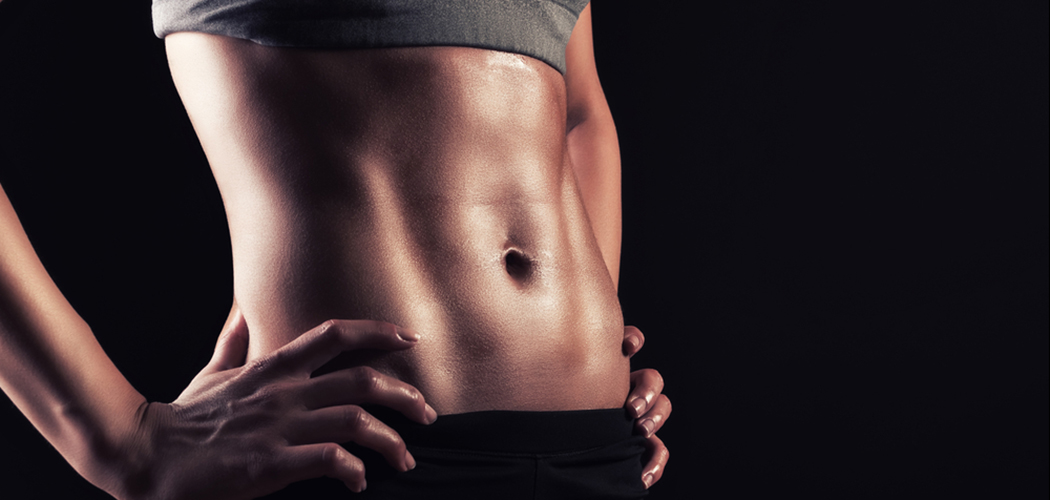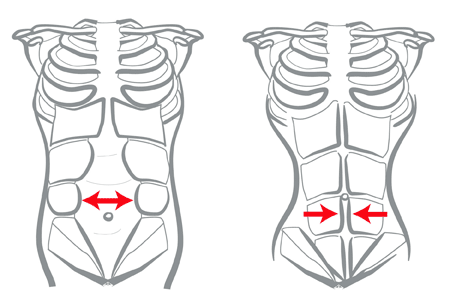Several years ago I was teaching a postnatal workshop on abdominal reconditioning. As an introduction, we went around the room and introduced ourselves and how old our children were. One surprising student was a woman whose son was 25 years old! She signed up because she had never managed to achieve a six pack or properly condition her body after his birth. Consequently, she suffered an emotional disconnect with herself. This woman inspired me and was a constant reminder of the emotional relationship we have with our bodies. So, regardless of whether you have a newborn or a much older child at home, there is never a “right” time to check in with how connected we are to ourselves. NOW is always the perfect time.
Obviously, as women, when we bear children, our bodies go through incredible changes both physically and emotionally. More often then not, like the woman mentioned earlier, we struggle to find our way back to “the way we were” pre-babies. I have learned to approach my body in a very practical way, meaning it is important to remember that after children, our bodies are FOREVER changed. You can spend the rest of your life trying to swim against that current, or surrender and go with it. I have also discovered an entirely new way of approaching my body through fitness and diet and have become passionate about learning how to safely and effectively focus on the “problem areas” generally affected after birth — which for most of us usually centers around the belly.
Weighing more than you did pre-kids or an accumulation of mommy-stress can obviously contribute to a bloated belly, but often the real cause is a separation of your abdominal muscles, known as diastasis recti. In a nutshell, during pregnancy and the pushing stage of childbirth the connective tissue that holds your rectus abdominis (those muscles that flex your trunk) stretches and can also separate.
Traditional abdominal exercises are unfortunately part of the growing problem of protruding bellies. In a typical fitness class it goes something like this: teacher instructs us all to lift our legs, head and shoulders off of the floor and pull our navels in. I just hang out on my back, do my own modification of the exercise and watch the people beside me. As I glance around I always see the same scene: everyone’s belly is actually popping out the wrong way, and here’s why:
Forget a six-pack–aim for a flat-pack
You’re going to love this: stop doing abdominal crunches. They almost always aggravate a diastasis recti by working your rectus abdominis, and without proper support from your transverse muscles below, your belly will pop out. Start by doing simple kegel exercises, practicing pulling your belly button back like you’re trying to squeeze on tight jeans. I love B.E.T’s approach to non-crunch lower ab conditioning. They teach a whole series of leg lifts that encourages your transverse to fire without engaging your six-pack muscles.
Wrap it up
My best gift to myself was a series of sessions of Jamu postnatal massage and abdominal binding with Karen Loke at Restoring Mums. You’ll read mixed reviews about this Asian tradition but I absolutely loved it. I actually felt a noticeable difference to my waistline, (don’t get all excited now, it wasn’t really a waistline! But compared to before, it was a step in the right direction). When you wear the wrap, use it as a reminder to draw your belly in.
Support yourself
First, find a friend and workout together. Then, literally support yourself by buying a splint to support your musculature. Think of the connective tissue between your two split rectus muscles as injured. It can’t hold positions like plank pose or push-ups, where gravity stretches the connective tissue even further. Julie Tupler makes the best splint on the market that is specifically designed to correct a diastasis, and this site ships her products to Hong Kong. The splint is not very comfortable, but try to bear with it. I hated wearing mine with a muffin top bulge (you know what I’m talking about!), so my compromise was to wear it when I did yoga and especially when I did abdominal exercises.
Less is more
When it comes to your abs, what you do regularly and habitually matters more than a few minutes of focused daily exercise.
Even if you do no exercise at all, please do this: Roll to your side before you get up from lying down. Coming up straight strains your ab muscles and your belly tends to pop out. (Try it once and see). Focus on low impact exercises where you can control your deep abdominals. Pushing yourself means excessive strain on your midsection.
Do some yoga the right way
As a yoga teacher, I’m naturally biased to say go hit up a yoga class! Choose your teacher wisely. Avoid backbends until you gain control of your lower abs. This includes everything from a simple cobra to full wheel pose. Backbends stretch connective tissue that is already overstretched. As you progress, the idea is to keep your transverse switched on during a backbend. I also suggest modifying plank pose by doing a plank pushup on your knees until you’re stronger.
Be mindful when lugging bags and baby
Who even thinks about their abs when carrying their baby or bags around? Actually, you should. One of the worst things for both your abs and back is a front load baby carrier. If you must carry your baby then look for a carrier that rests on your hips. My two top choices are the Ergo and the Becco.
One final note
After a long and full life you don’t want to be remembered as the mom with a flat stomach but rather the mom with a full heart. Be mindful of the things that matter. All things considered, I’d take my 4 kids plus a belly pooch any day!
This article was first published on Sassy Mama HK, the modern day mom’s go-to guide for city living.

